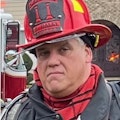Multi-tasking at Multiple Dwelling Occupancies: Engine Operations
This month, we will be discussing some strategic considerations for engine companies when they arrive at a working fire in a multiple occupancy dwelling. Previously, we had discussed some of the more common issues with multiple dwellings, no matter the size or configuration. We will take a look at how these issues affect the operations of the engine companies on scene.
Engine companies play a key part of the fireground operation. Each of these units has specific responsibilities on-scene, such as:
• Water supply
• Placement of attack and back up lines
• Protection of exposures
• Master stream operations
• Protective system operations
• Property conservation
• Overhaul
• Search (Off the hose line)
A primary concern of the engine company is not only location of the fire, but also the extension capabilities that the incident may create. It is important that the engine company members understand and recognize how fire spread may occur, particularly:
• Convection - This occurs through the travel of heated matter, specifically smoke, heated air, and heated fire gases.
• Conduction - this occurs through the travel of heat through a solid body of matter, or conductor of some type. Different materials will serve as better conductors than others, based on density and composition of the conductor.
• Radiation - This allows heat to travel without the use of any material substance whatsoever, and is the toughest to protect against.
• Direct Flame Contact - Flames impinge on materials within the area of burning, and increase the object temperature to its ignition point.
Issues For The Engine Company
One of the most critical issues with multiple dwellings, especially multi-story occupancies, is that the fire load and the victim potential is directly above one another, meaning that the fire can spread quickly and affect victim egress immediately (see Photo 1.) Taking this into consideration, it is vital that control of the stairways and vertical arteries in the occupancy are controlled by the first arriving units. Getting handlines into the stairways is a vital task to protect the occupants during their escape, and control most vertical fire spread. Many times, occupants leave the fire doors at the stairs chocked open, and this allows for smoke and heated gases to spread to upper floors, and cuts off any escape paths that the victims may have.
Engine companies should also anticipate vertical fire spread via pipe chases and void spaces located throughout the structure. Construction techniques result in voids for utilities and pipes throughout the dwelling and can serve as an artery for flame spread (see Photo 2.) One of the biggest voids in the building will be located behind the bathroom wall, in the vicinity of the toilet. This area is used for both the drain pipe and the vent pipe, each going in opposite directions. With multiple units being served by one void, the area will have to be large enough to accommodate its usage. Open this void space and check it thoroughly whenever this area is potentially exposed to fire spread.
Choosing the right hoseline during initial operations can make or break the entire operation. The initial arriving engine company officer has some critical thinking to do: choosing the right size line (diameter and length) and making sure the line can make the required flow to extinguish the fire. But first, the officer needs to know where the fire is, and what stage the fire is in; therefore, location and extent of the fire is considered the most important size-up concern for most officers (see Photo 3.) Fire conditions can dictate the use of either 1 3/4-inch or 2 1/2-inch handlines for needed fire flow, and when in doubt, it is best to go bigger. Reaching the fire area is just as important, so bringing the right amount of hose is critical. There are two schools of thought on this:
- one length to the door, and one per floor. Add one working length to cover the floor area.
- length plus width of the fire floor, plus one to the door. Don't forget to add one working length into the equation.
Considering the size hose, the gallons per minute of flow, and the location the line needs to get to, be sure that the engine company is adequately staffed to get the hand line safely and efficiently into position.
Large multiple dwellings may be equipped with standpipes in the structure. If so, the engine company can make use of this and attack the fire from the connection on the floor below. Be sure to take the friction loss of the system into consideration, based on the height of the fire floor. Engine companies can mount their attack on the floor below the fire, referred to as the operations floor. Reviewing the layout of the floor below may aid the companies in getting to the seat of the fire quicker. Equipment and extra bottles can be placed on the next floor down, or the resource floor.
Upon Arrival Of The First Engine
First Arriving Engine Company As the first engine is arriving, it is a good practice to drive past the fire building, and position at the corner of the structure for two reasons: it allows the company officer to see three sides of the building, aiding in their size-up; and it leaves room in front of the building for the truck company to set up (Photo 4).
The company officer must take into consideration the potential for flashover, backdraft, utility hazards, auxiliary appliances, and potential of collapse, prior to committing personnel to the operation. One of the most important size-up considerations is the location and extent of the fire. This will set the mode of operation (offensive, defensive, marginal, etc…) and units can then be assigned accordingly.
Assuming there will be an aggressive interior operation under way at a multiple dwelling fire, then the engine company will have to establish a secure water supply upon arrival. If there is a sprinkler system or standpipe system in the building, it will need to be supplied.
Next, the crew will have to stretch the appropriate size handline into place (This is the make-or-break point for many scenes) and get the line to one of two locations: at the seat of the fire to locate, confine and extinguish the fire, or between the fire and the victim (Photo 5). This crew must coordinate suppression with the arriving truck company's ventilation team. If not, this can lead to huge problems on scene.The officer must also report conditions inside the dwelling to the Incident Commander (IC) so tactics can be adjusted as needed.
Upon Arrival Of The Second Engine
The second arriving engine company should position itself in order to secure a back up water supply, if the need arises for one. While this is getting done, the crew can enter the dwelling with a back up line: I prefer to go one size up and one length longer, but the same diameter line at a minimum. This line has to be positioned to back up the first line in the event they run into problems, and to protect the stairs and means of egress for the crew and the residents.
This crew should also protect the search team as they are operating, and coordinate ventilation with the truck company assigned this task (Photo 6). It may be possible that this line might be sent one floor up, to protect the search team and check for extension, but backing up the first team is still the number one priority!
It would be better suited to send a third team in with a third hoseline, to protect the floor above and check for extension. This would be a perfect job for the third arriving engine company. Be sure to send this hand line into the structure from a different location, as trying to work with three lines going through the same opening will become problematic.If a rescue is to be made, the amount of hose and manpower clogging up the opening may cause delays in victim/firefighter removal. Keep the egress points as clear as possible.
After the fire has been knocked down, overhaul at the scene is a critical task for the engine company. Making sure the fire is completely out and checking for hot spots from extension is not to be taken lightly. Keep all of your gear on and in place, and rotate crew members frequently to avoid fatigue and injury.
Conclusion
The scene of a fire in a multiple dwelling is a very dangerous operation. There could be a large life hazard in this occupancy, along with the hazards of mixed usage in the building (hazardous materials). Both the engine and truck companies have critical tasks that must be done in a safe and efficient manner immediately upon arrival, and coordination of these activities is paramount for a successful outcome. Until next time, stay focused and stay safe.
MICHAEL P. DALEY is a lieutenant and training officer with the Monroe Township, NJ, Fire District No. 3, and is an instructor with the Middlesex County Fire Academy, where he is responsible for rescue training curriculum development. Mike has an extensive background in fire service operations and holds degrees in business management and public safety administration. Mike serves as a rescue officer with the New Jersey Urban Search and Rescue Task Force 1 and is a managing member for Fire Service Performance Concepts, a consultant group that provides assistance and support to fire departments with their training programs and course development. Mike has been guest on several Firehouse.com podcasts including: Successful Rescue Operations in Today's Fire Service, Preparing for Tomorrow's RIT Deployment Today and Basement Fire Tactics Roundtable podcasts. View all of Michael's artices and podcasts here. You can reach Michael by e-mail at: [email protected].
About the Author

Michael Daley
MICHAEL DALEY, who is a Firehouse contributing editor, recently retired as a 37-year veteran who served as a captain and department training officer in Monroe Township, NJ. He is a staff instructor at multiple New Jersey fire academies and is an adjunct professor in the Fire Science Program at Middlesex County College. Daley is a nationally known instructor who has presented at multiple conferences, including Firehouse Expo and Firehouse World. His education includes accreditations as a Chief Training Officer and a Fire Investigator, and he completed the Craftsman Level of education with Project Kill the Flashover. Daley is a member of the Institution of Fire Engineers and a FEMA Instructor and Rescue Officer with NJ Urban Search and Rescue Task Force 1. He operates Fire Service Performance Concepts, which is a training and research firm that delivers and develops training courses in many fire service competencies.
